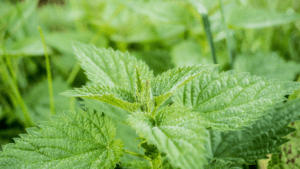Introduction
Pampas grass, known for its tall, feathery plumes and lush texture, has become a favorite among gardeners, interior designers, and event planners alike. Whether you’re looking to add a touch of elegance to your garden, create stunning home decor, or elevate a wedding setting, pampas grass is versatile and stylish. In this comprehensive guide, we will explore everything about pampas grass, including how to grow it, care for it, and use it in various design settings. If you’re considering this plant for your garden or decor, this article will provide all the insights you need.
What is Pampas Grass?
Pampas grass (scientifically known as Cortaderia selloana) is a perennial ornamental grass native to South America. It is characterized by its tall, arching stems and distinctive feathery plumes that come in shades of white, cream, and pink. The grass can grow up to 10 feet tall and is renowned for its dramatic appearance, which adds movement and texture to gardens and decor spaces.
Key Characteristics of Pampas Grass
- Height: Can reach up to 10-12 feet in ideal conditions.
- Plumes: Soft, fluffy, and feathery, making it visually striking.
- Colors: Typically comes in white, cream, or light pink shades.
- Bloom Season: Blooms in late summer to early fall.
- Hardiness Zones: Thrives in USDA hardiness zones 7-11.
Types of Pampas Grass
Pampas grass comes in various types, each offering unique qualities. Here are some popular varieties:
1. Common Pampas Grass (Cortaderia selloana)
The most popular variety, known for its tall stature and creamy white plumes. It’s a favorite in both gardens and floral arrangements.
2. Pink Pampas Grass (Cortaderia selloana ‘Rosea’)
This variety features beautiful pinkish plumes, adding a soft and romantic feel to gardens and arrangements. It’s slightly smaller in height compared to the common variety.
3. Dwarf Pampas Grass (Cortaderia selloana ‘Pumila’)
A shorter variety, growing only up to 5-6 feet, making it ideal for smaller gardens or as a border plant. It has the same classic feathery look but is more manageable in size.
4. Andean Pampas Grass (Cortaderia jubata)
A faster-growing and invasive variety known for its light pink to purple plumes. It can reach up to 13 feet in height but is not recommended for areas where it can become invasive.
5. Silver Pampas Grass (Cortaderia selloana ‘Silver Comet’)
A variegated variety with green and white striped leaves. It has a unique look and is perfect for those who want a decorative touch even when the grass isn’t blooming.
How to Plant Pampas Grass
Pampas grass is a low-maintenance plant, but proper planting is crucial for its healthy growth. Here’s a step-by-step guide to planting pampas grass:
1. Choosing the Right Location
Pampas grass thrives in full sun, so choose a spot that receives at least 6-8 hours of direct sunlight daily. Ensure the area has well-drained soil, as soggy conditions can lead to root rot. It’s also a good idea to plant pampas grass in a location where it has room to grow, as it can spread up to 6 feet in width.
2. Preparing the Soil
Pampas grass prefers slightly acidic to neutral soil (pH 5.5 to 7.0). Before planting, enrich the soil with organic matter like compost or well-rotted manure to enhance drainage and nutrient content.
3. Planting Steps
- Dig a hole twice as wide and as deep as the root ball.
- Place the plant in the hole, ensuring the top of the root ball is level with the soil surface.
- Backfill the hole with soil, pressing gently to remove air pockets.
- Water thoroughly to help the plant settle.
4. Spacing Considerations
For a natural look, space pampas grass 6-8 feet apart. This allows each plant ample room to grow without crowding.
5. Watering and Mulching
Water newly planted pampas grass regularly until established. Mulch around the base to retain moisture and suppress weeds.
Care and Maintenance of Pampas Grass
Once established, pampas grass requires minimal care. However, proper maintenance will ensure it stays healthy and visually appealing.
1. Watering Requirements
Pampas grass is drought-tolerant once established. Water deeply but infrequently—about once a week during dry spells. Avoid overwatering, as soggy soil can damage the roots.
2. Fertilizing Tips
Fertilize pampas grass in early spring with a balanced slow-release fertilizer. This will encourage robust growth and vibrant plumes. Avoid over-fertilizing, which can lead to excessive foliage growth at the expense of flowers.
3. Pruning and Trimming
- Late Winter to Early Spring: Cut back pampas to about 12-18 inches from the ground. This encourages new growth and prevents the plant from becoming too dense.
- Protect Yourself: Use gloves and long sleeves when pruning, as the leaves can be sharp.
4. Pest and Disease Control
It is generally pest-resistant but can occasionally be affected by:
- Aphids: Use insecticidal soap or a strong spray of water to remove them.
- Fungal Issues: Ensure proper air circulation and avoid overhead watering to prevent fungal diseases.
5. Winter Care
In colder regions, pampas can struggle with harsh winters. Mulch heavily around the base in late fall, or consider wrapping the plant in burlap to protect it from frost.
Using Pampas Grass in Landscaping
It is a versatile plant that can be used in various landscaping designs:
1. As a Privacy Screen
Pampas grass’s tall and dense foliage makes it an excellent natural screen for privacy. Plant it along fences or property lines for a decorative barrier.
2. Accent Plant
Its dramatic plumes make it a great focal point in a garden. Use it as a standalone accent in flower beds or in front of larger trees and shrubs.
3. Mixed Borders
Combine it with perennials like coneflowers, lavender, and ornamental grasses to create a dynamic and textured border.
4. Erosion Control
Pampas grass’s deep root system can help stabilize soil and prevent erosion on slopes or embankments.
5. Container Gardening
For those with limited space, dwarf varieties of pampas can be grown in large containers to add a tropical touch to patios and balconies.
Styling Pampas Grass for Home Décor
Beyond the garden, it has become a popular choice for interior decor. Here’s how you can style it indoors:
1. Dried Pampas Grass in Vases
Dried pampas is a trendy home decor element. Place large plumes in a tall vase for a chic, bohemian look. They work well in living rooms, bedrooms, and entryways.
2. Centerpieces for Dining Tables
Create a stunning centerpiece by arranging pampas with fresh flowers or greenery. Choose shorter stems for a more compact and elegant look.
3. Wall Hangings and Garlands
It can be woven into wall hangings, wreaths, or garlands for a rustic touch. It adds texture and warmth to neutral color schemes.
4. Event and Wedding Decor
It is a favorite for boho-themed weddings and events. Use it in bridal bouquets, aisle decorations, and backdrops for a dreamy and romantic atmosphere.
5. Mixing with Other Decor Elements
Pair it with earthy tones, natural woods, and neutral fabrics for a cohesive and inviting decor style.
Common Problems with Pampas Grass
While it is relatively easy to grow, some challenges may arise:
1. Overgrowth and Spread
It can become invasive if not managed. Regular pruning and deadheading can help keep it under control. Consider root barriers if planting near garden beds or pathways.
2. Sharp Leaves
The leaves of pampas are sharp and can cause cuts. Use gloves when handling and place it away from high-traffic areas, especially if you have children or pets.
3. Cold Damage
In colder climates, it can suffer from frost damage. Protect it during the winter with mulching or by planting in sheltered areas.
4. Fungal Diseases
Poor air circulation can lead to fungal diseases. Ensure proper spacing between plants and avoid excessive watering to minimize this risk.
Propagating Pampas Grass
It can be propagated by seed or division:
1. Propagation by Seed
Collect seeds from mature plumes in the fall. Sow them in a well-draining seed mix in early spring. Keep the soil moist and place in a warm, sunny location.
2. Propagation by Division
- Divide mature plants in early spring before new growth starts.
- Use a sharp spade to separate a clump from the main plant.
- Replant the divided clump in well-prepared soil.
Where to Buy Pampas Grass
It can be purchased from various sources, including:
1. Local Garden Centers
Check with your local nursery or garden center for live plants or seeds.
2. Online Nurseries
Several online stores specialize in ornamental grasses, offering a wide variety of pampas grass types.
3. Floral Shops
Dried pampas can be purchased from florists or online floral shops, perfect for home decor or event styling.
4. Farmers’ Markets
In some regions, local farmers’ markets may have fresh or dried pampas for sale, especially in late summer and fall.
Conclusion
Pampas grass is more than just a trendy decor element; it’s a versatile, low-maintenance plant that can transform gardens and interior spaces alike. Whether you’re growing it outdoors or using it as a stylish home accessory, it offers endless possibilities. With the right care and creative touch, this ornamental grass can bring elegance, texture, and a hint of the exotic to any setting.




